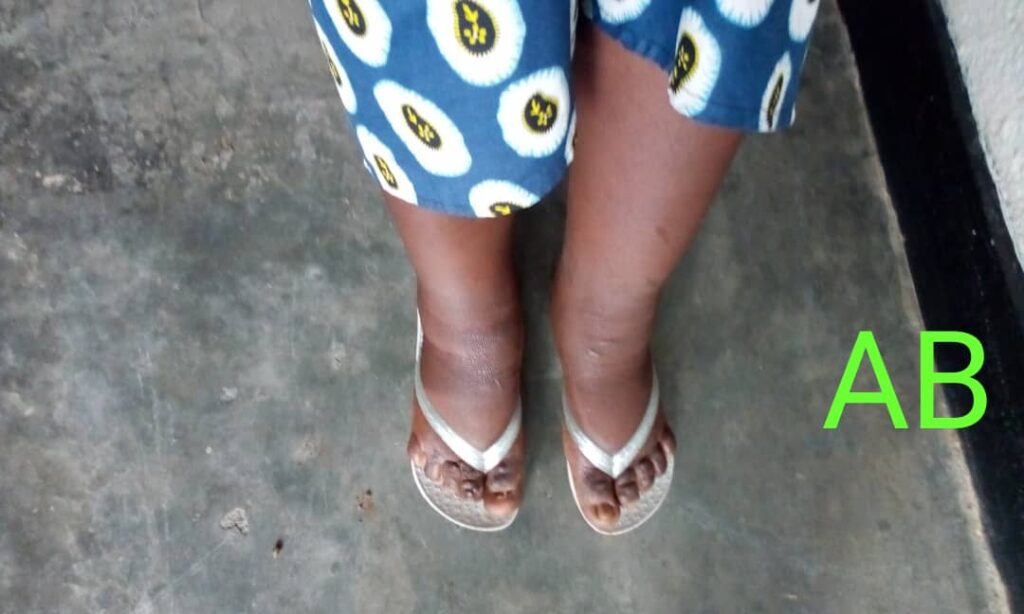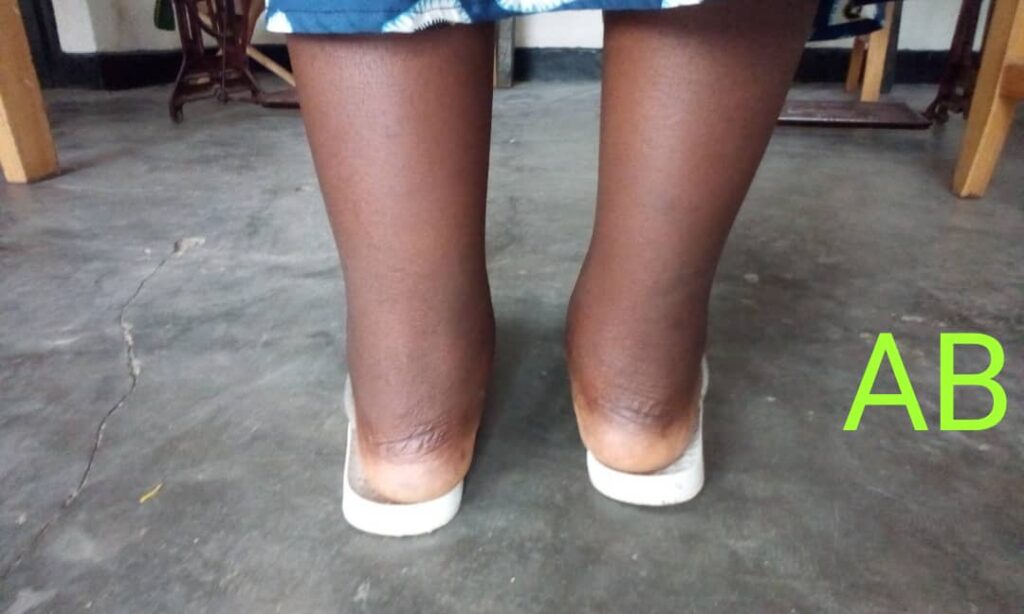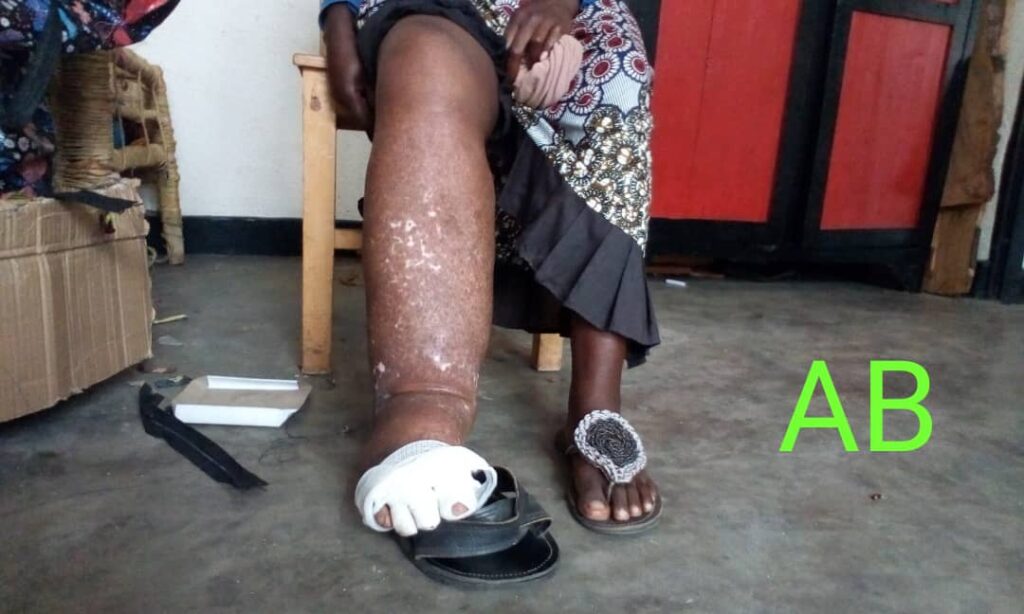By Annonciata Byukusenge
Podoconiosis is a type of tropical lymphoedema clinically distinguished from lymphatic filariasis (LF) through being ascending and commonly bilateral but asymmetric. Evidence suggests that podoconiosis is the result of a genetically determined abnormal inflammatory reaction to mineral particles in irritant red clay soils derived from volcanic deposits. According to WHO, Podoconiosis is a form of elephantiasis arising in barefoot subsistence farmers who are in long-term contact with irritant red clay soil of volcanic origins.
The Rwanda Biomedical Center says that more than six thousand (6,000) people suffering from podoconiosis in all districts of the country. “There is people haven’t the ability to wear shoes and the experts in health say that the podoconiosis is a disease of the feet and legs that is caused by the combination of walking and working without shoes for a long time.
Some of people suffering from podoconiosis say how they struggling with this disease and how they started journey of treatment.
Imanizabayo Sophia live in Musanze district, Muhoza sector. She is suffering from podoconiosis. She said how the elephantiasis affected her in her childhood and how their parents went to the traditional doctors, because they didn’t know what happened to their child.
“When I had six years old my left leg pimpled as broken. My parents said that I was broken during playing with other children. After one month, the pimple was increased too much and they took me to the tradition doctor, because they guess that I am poisoned by our neighbors. Tradition doctors gave my parents herbals medicament for drink other for massage.”

They continued to collect tradition medicines for six years. When she had 12 years, her parents stopped the tradition medicines because the swelling didn’t decreased and it was extended from foots to knees and right leg also affected when she had 10 years.
“In 2016 my legs were big and I didn’t able to wear shoes because of the swelling. My parents took me to the hospital and doctors didn’t identify the illness immediately. Here I had 15 years. After three months the doctors told us that I am suffering from elephantiasis. They advised my parents to go to Heart and Sole Africa (HASA) for treatment.”

Uwingabire Providence is suffering from elephantiasis/ podoconiosis for 22 years. Her testimony focuses on how the parents are not informed about elephantiasis disease and they need awareness about it.
“When I was in primary school, I saw small pimple on my legs. After one week the pimple like skin disease and it was inflamed. My parents said that I am poisoned by our neighbors, because the pimple were filled with water and it causes a lot of pain.”
She added that her parents took her to the traditional doctors and give them the herbal medicine for treatment.
“We use that herbal for six years and I didn’t recovered. On 12 years my parents stopped to use traditional medicine and took me to the hospital. The doctors helped me as skin infection patient, because they didn’t identify illness immediately. In 2008 I joined Heart and Sole Africa (HASA) for treatment, now the pimple recovered and the swelling decreased. ”
She added that if her parents were informed about elephantiasis, they could help her for treatment on time.

“Awareness for community is needed because they confuse podoconiosis with poison. When they will be informed, they will take care to their kids for wearing shoes.”
Nyiraminani is a mother of three kids live in Nyaruguru district. An interview with the Forefront Magazine said that elephantiasis is poison not illness.
“In our village we know that elephantiasis is poison, because isn’t common sickness. Some people poison their neighbors because of jealous. I don’t understand how you link to wear shoes with avoiding poison.”
She added that, if the reason is not wearing shoes they need many things like information about elephantiasis and support for shopping shoes to our kids.
Rugerabicu is a health community workers. He said that they don’t have enough information about elephantiasis. They need awareness in order to help community understanding that elephantiasis is disease not poison as they fixed.
“We (Health community workers) contribute in different campaign and programs help people to be aware on different diseases, but on podoconiosis we still informed. We need training and after getting information, we will share to the community.”
Mr. Jean Paul Bikorimana is an expert in health, working with Heart and Sole Africa. He emphasizes that podoconiosis is a chronic disease but it can be treated.
“Podoconiosis non- communicable, it is a chronic disease but it can be treated, the swelling will decrease, the pain will be restored and the person will be able to do their normal activities and life will continue. If left untreated, it can have a variety of side effects including disability.” Said Bikorimana.
He added that the parent have responsibility to take care to their kids for wearing shoes, but some of community are not able to shop shoes to their kids.
“The big challenge is that the majority of rural community are vulnerable. Is not easy to tell people to buy shoes and they don’t have food to their kids. Education is a journey, slowly their behavior will be changed.”
About the role of parental in the eradication of elephantiasis, Bikorimana highlighted that parents have to be responsible on their kids because kids under 10 years are not able to provide any service themselves.
Parents should take extra care of their children because elephantiasis show symptoms within ten years. Thus, the child was helped to find shoes to wear without stepping on the ground, and there were no more new cases of this disease.
Uwizeyimana Jeanne is director of Heart and Sole Africa (HASA), the supportive care also treats podoconiosis patients. Said that they started the campaign of awareness in different districts, because in 30 districts of the country identified elephantiasis patients.
Heart and Sole Africa (HASA) as supportive care also treats elephantiasis patients, now we work with 11 Health Centers (treatment center) in partnership with Rwanda Biomedical Center (RBC). This number is too small, but they have the goal of extending our activity in the whole country.
Is possible to end elephantiasis in 2024?
“The current plan is that podoconiosis will be eradicated by 2030 and by 2024, access to healthcare will reach 95%.” Strategic plan.
He added that the podoconiosis non- communicable, it is a chronic disease but it can be treated. Is not easy to eliminate chronic disease and they can’t say that the patients of podoconiosis are decreased, because it is a chronic disease. According to the survey 2019 published by Rwanda Biomedical Center, in Rwanda they count 6429 patients of podoconiosis in 30 districts of the country.

